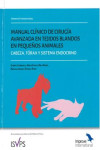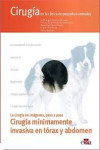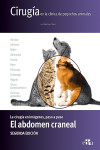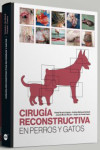SERVET CLINICAL GUIDES: CHRONIC KIDNEY DISEASE
Pineda Martos, Carmen María ; López Villalba, Ignacio ; Suárez Rey, María Luisa
Datos técnicos
- ISBN 9788418020636
- Año Edición 2020
- Páginas 144
- Encuadernación Tapa Dura
- Idioma Inglés
Sinopsis
This Servet Clinical Guide on chronic kidney disease provides veterinary surgeons with the most up-to-date information on this disease to help them establish diagnosis and select the most appropriate treatment for each patient. Readers are provided with a series of guidelines, presented in a visual and dynamic manner, that will help them develop an effective relationship with the owner and explain the key aspects of their pets disease.
Índice
1. Visit to the clinic
What is chronic kidney disease?
What is the first sign that the owner observes?
Anamnesis to guide the diagnosis
Risk factors
Differential clinical signs
Clinical examination protocol
Points to which particular attention should be paid
2. Diagnostic protocols
Identifying the primary disease
Most common laboratory alterations
Haematology
Blood biochemical analysis
Urinalysis
Acid–base and electrolyte analyses
Blood pressure measurement
Useful diagnostic imaging tests
Radiography
Ultrasound
Computed tomography
Magnetic resonance imaging
Scintigraphy
Specialised diagnostic tests
Estimation of glomerular filtration rate
New markers of renal function
How to manage phosphocalcic metabolism
disorders
Renal biopsy
Staging and diagnostic criteria for CKD
3. Communication with the pet owner
How to inform the owner
Can an animal with CKD be cured?
Can disease progression be predicted?
CKD prognosis
How long can an animal live with CKD?
What factors influence survival time?
Guidelines to follow once diagnosis is established
4. Treatment protocols
Medical treatment of the patient
Dietary modification as a fundamental pillar of treatment
Correction of dehydration and management of acid–base and electrolyte alterations
Treatment of gastrointestinal signs
Treatment of anaemia
Treatment of hyperphosphataemia
Treatment of hypertension
Treatment of proteinuria
Other treatments
Calcitriol
Mesenchymal stem cell therapy
Probiotics
Calcimimetics
Control of uraemic crisis in cases of exacerbation of CKD
Use of replacement therapies
5. Guidelines for the owner: follow-up
Owner involvement, a key element in the management of CKD
What signs should be monitored once diagnosis is established?
How often should periodic check-ups be performed?
How often should a patient with CKD visit the veterinary clinic?
What should we do when the disease progresses to terminal stages?
6. Appendix
Suggested treatment protocols according to IRIS CKD stage
Recommended reading
Otros libros que te pueden interesar
- ¿Quiénes somos?
- Gastos de envío
- Política de privacidad
- Políticas de devolución y anulación
- Condiciones Generales de contratación
- Contacto
2025 © Vuestros Libros Siglo XXI | Desarrollo Web Factor Ideas










